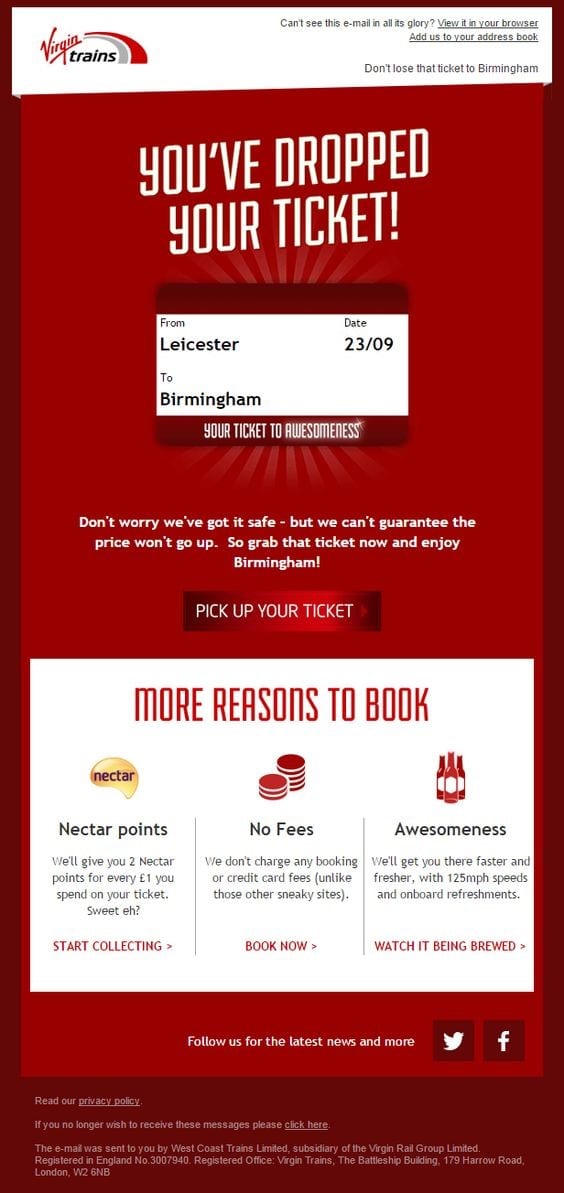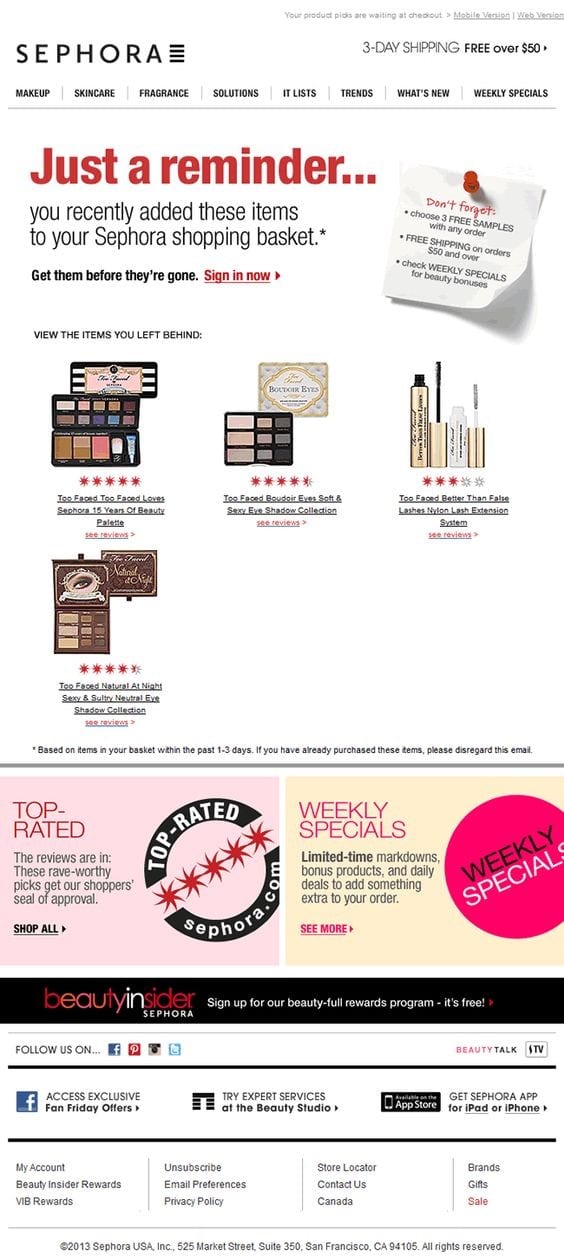Send the right message, to the right person, at the right time: Automating your campaigns
Automated campaigns are the backbone of a successful email marketing strategy; campaigns that are set up within your email system and send automatically based on specific rules. In this blog post, we will cover 5 automated campaigns to consider as part of your lead nurture sequence.
1. Welcome series
This is often the first impression that a prospect has of your brand and gives you the opportunity to immediately start to build a relationship with your new subscriber when they are at one of their most engaged stages with your brand.
These emails should welcome and thank the new subscriber, as well as to start setting expectations of what will happen next – including actions you want them to immediately take; such as to download an app, complete their registration, get in touch with you or make an initial purchase.
The example below from Salesforce jumps straight in with a call to action to speak to a salesforce strategist and start a sales conversation – this was triggered after looking at blog content, which I would suggest is probably slightly early in the customer journey for this type of message. This perhaps would be more appropriate after looking at specific product pages for example.
The example from Slack encourages you to get more from the product by downloading the app to get more from the product – this is a great way to prompt the user to use the service more, as well as promote the flexibility and ease of use.

Welcome email Salesforce.

Welcome email Slack.
The below example of two emails from Natural Cycles confirms the subscriber has signed up to a free trial and when it ends (personal information to them using dynamic fields).
In the first email they also highlight three key benefits of using their service. The second email is triggered because the subscriber has not completed their full registration and seeks to discover why so that they can further assist them in their journey.

Natural Cycles completed trial signup.

Natural Cycles incomplete sign up follow up email.
Over a series of emails following the initial touchpoint of the sign up with a prospect, you have the opportunity to continue the conversation, engage, educate and inspire your subscriber, provide extra value and information and start to drive them towards your required result – e.g. making a purchase.
For B2B companies, this process will spread over a longer period of time, with much more added value needed, whereas for B2C the prompt for a sale can start from the first message.
2. Inaction
Another point at which to start a lead nurture series is after a period of inactivity with your brand – either as part of an initial welcome series (splintering off to deliver slightly different content for those who haven’t taken specific actions vs those who have been engaged with previous messages) or as a new series after a period of time has passed, specific actions haven’t been taken that you know need to be taken before someone will be sales ready, or to enable them to use your free trial to maximum impact, for example.
The example below from Gett aims to encourage subscribers to start using their service by giving them credit that expires (creating urgency in their messaging).

Gett inaction email.
3. Abandoned action emails
Depending on whether your business is B2B or B2C there will be different abandon actions that may happen that could trigger emails to be sent to encourage the subscriber to continue their journey with you.
For example, for B2C you may have an abandoned basket email encouraging the subscriber to come back and buy the products that have been left in their basket. Whereas, for B2B you may have an abandoned form email triggered when someone completes the first stage of a form but does not go on to complete the process.
In both cases, you can have abandoned browse emails; for B2C these will focus on inspiring subscribers to come back and continuing exploring a category of products or specific type of product they were looking at, and to make a purchase.
Whereas for B2B, this could involve suggesting other related blog posts/content they may like based on what they have already looked at, or to encourage them towards more product information if they have shown behaviour that indicates they could benefit from the service provided/they have already started to look at product pages/reviews for example.
Abandoned browse:

Abandoned browse email from Virgin Trains.
Abandoned basket / Form abandoned email

Sephore abandoned basket email.
4. Education/inspiration emails
These types of emails can be used in many ways to deliver content that will help to move subscribers through the journey and to your desired action – usually to make a purchase.
By teaching the subscriber something as in the case of the Aweber example below with blog content or inspiring them with other people’s views on what’s hot as in the Habitat example, you are providing value to them.
The Rejoiner example also does this but is a little further down the customer journey and also providing case study and testimonial content to educate the subscriber on how their service can help solve their problems, as they have done for another customer, as well as providing additional value with other blog posts.

AWeber blog content and inspiration email.

Habitat interior inspiration email.

Rejoiner education email with testimonials and case studies..
5. Demo/product offer emails
These emails are often found towards the last stages of a lead nurture series (particularly for B2B – although for B2C an offer is often given from the very first welcome message as shown in the Tommy Hilfiger example below). They aim to encourage the subscriber to try the product/service on offer – often with a free/special offer given to incentivise them.

Tommy Hilfiger product offer
